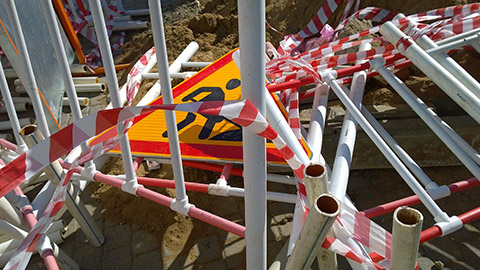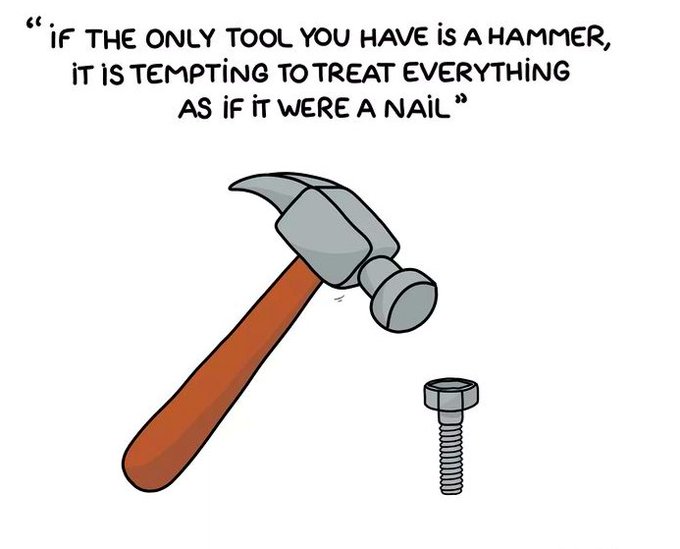Welcome to this topic of Communication Barriers.
Our aim in this topic is to:
- Consider the barriers to communication.
- Outline the advantages and disadvantages of communication methods in the workplace.
- Understand the listening and interpretation of information.
Lots of things can get in the way of good communication.
What we say may not be heard as we intended, or even at all.
Awareness of barriers in your communication message allows you to change the instructions and ensure the listener understands your message.
As mentioned earlier, your chosen words can be misunderstood or affect effective communication for several reasons.
- They might have multiple meanings, be specialised or technical to that area, or even be negative and offensive to someone.
- Sometimes, words or phrases we use daily may have no meaning for people from other places or cultures.
Every industry has its slang or terms; these are words and terminologies with particular meanings to that area that may not be used in other work scenarios. Terms and phrases are useful in communication, but only if both parties understand them. Incorrect use by someone unfamiliar can create a barrier.
Case Study - Matty’s Instruction
Matty, one of our site supervisors, has provided the following instructions:
“The compressive strength of the mortar in structural masonry should be at least 12.5 MPa at 28 days, and the masonry-to-mortar bond should be 200 KPa at 7 days."
This instruction would be a mystery for someone unfamiliar with the lingo because they wouldn’t know what the words meant.
What do you think Matty is trying to achieve? How would you rephrase it using your lingo?
Share and discuss with your tutor and peers during one of the Live Sessions.

When discussing being an effective communicator, the ‘context’ means what else is happening around the people you are communicating with and their psychological state. This could either be in their work or personal life.
If someone is sad, angry, or busy, they may be less receptive to your approach to instruction or dealing with a situation or problem.
Some potential attitudes of workers could be:
- Poor motivation, especially if they think they don’t need to be there.
- They may feel uncomfortable being part of the group because they are worried about being shown up.
This context can get in the way of good communication with the team, as it is related to the speaker’s attitude or state as well; these include:
- rushing to fit a session into your timetable.
- having doubts about the need for the meeting.
- favouring or disliking certain individuals that result in discriminatory or preferential treatment.
- trying to impress the workers rather than giving clear instructions.
- being annoyed or impatient with questions.
Staff members can spot poor attitudes, even if you don’t say them aloud when giving instructions. For instance, as covered previously, your body language, the way you stand or speak, can show you are bored or annoyed.
How to overcome the barrier
Improving communication in construction involves using clear language, visual aids, and regular check-ins to ensure a shared understanding. Encouraging questions, providing training, and utilising technology contribute to effective collaboration. Establishing a feedback mechanism allows continuous improvement for successful project outcomes.
Everyone in your workplace plays a different role besides taking on the role of a construction team member.
They could be an apprentice, a son or daughter, a father or mother, a brother or sister, members of a sports or hobby club, etc. This means they bring all their past experiences, feelings, attitudes, values and expectations of their work, and these add to the multifaceted nature of communication in the construction industry, particularly when it comes to conveying information and understanding project requirements.

Twitter post on Law of the Hammer by Abraham Maslow
Traditional Practices vs. Modern Methods
The building industry has had a long history, and many traditional methods and practices have been passed down through generations. While some of these methods are still effective, the industry has evolved with technological advancements, materials, and techniques.
Communication barriers could occur when different parties have varying levels of familiarity with traditional versus modern methods, leading to misunderstandings or resistance to the change.
How to overcome the barrier
Ways to help overcome this barrier would be to learn about the people you work with and what they’ve done in the past and consider this when you communicate with them.

Every person is different, which is great for work diversity, but sometimes, these differences can create barriers when communicating instructions.
The way someone expresses themselves and how they respond to others is determined by many contributing factors:
- Their age
- Their education
- Personal background
- Work history
- On-site abilities.
How to overcome the barrier
As a leader of diversity, you must be aware of people with hearing, sight, or language difficulties. You can develop your skills to explain instructions in different formats, like diagrams or demonstrations. You could also concept check by speaking to them later to ensure they understand the information.
In saying that, most workers or staff can use regular workplace language well enough to get by. Still, if your worker is from a different country, they may have difficulty with new language terms or instructions that are given too quickly or only once.
A general note in and around the site would be to get to know the staff you work with and take personal preference into account when you communicate with them. For example, knowing that someone is shy can stop you from thinking that they’re being unfriendly or avoiding you.
People from many diverse backgrounds work within the construction industry. We should also consider New Zealand as a multicultural society, with a range of cultural, religious and language diversity to consider.
Building projects often involve many teams from diverse backgrounds; these include architects, engineers, contractors, subcontractors, and labourers.
Each of these groups brings their cultural influences and ways of communicating. Having misunderstandings of cultural differences can hinder effective collaboration and communication for project outcomes.
DIY Culture in the Media
Let's revisit a classic portrayal of builders in this Mitre 10 advertisement from 2009 and see how cultural differences and similarities are at play.
Addressing Cultural Differences
As a leader, it is important to recognise that everyone has their beliefs and traditions. It is crucial to accommodate the diverse range of staff or clients while still maintaining your values. If you were working overseas, you would want to be treated with respect and understanding. As a supervisor, you can observe others and anticipate any potential cultural customs issues on-site, treating them accordingly.
Think back to all the visual methods required for effective communication.
Your verbal and non-verbal behaviours while giving instructions can easily be misinterpreted and give the impression of prejudice or intolerance in your communication.
If you are not familiar with the traditions or culture of other staff members, it could affect your communication message.
How to overcome the barrier
To be safe while speaking with others from a different culture, it is important to use language that is:
- clear and concise
- directive and courteous
- culturally sensitive.
Sometimes, it may be difficult to know whether you are being culturally appropriate, but being professional in your approach would limit any potential issues later on.
Here are some general guidelines that can be put into practice.
- Think before you speak.
- Be polite and show respect.
- Behaviours and responses that are offensive in your culture are often offensive in other cultures, too, for example, making racist or sexist comments, feet on the table, using inappropriate touching, etc.
- If in doubt about any cultural practices, clarify with the person and show that you are willing to learn about a different culture.
Two common cultural barriers in a construction setting could be:
- Some cultures don’t encourage young people to question their elders, especially in public.
- Cultures show respect for authority figures in different ways, like looking away rather than looking in the eye, standing in their presence, sitting at a lower level, etc.
To address these potential issues in a meeting, handle questions privately and create a more open environment for discussion.
Remember, staff with English as a second language may understand the ideas well enough and be able to put them into practice, but they may have difficulty with new terms or a speaker’s pace.
Further information on how you and the employer can embrace cultural diversity in the workplace can be read in the following article, “Embracing Cultural Diversity: A Key to Success in the New Zealand Workplace”.
Let's invite our five-year-old selves to watch this clip from Bob the Builder and help assess the environmental barrier presented on-site.
Reflection
- What did your five-year-old self think of this situation?
- Did you empathise with Leo?
- Did he only miss out on the cake?
- Did he miss out on a team bonding opportunity?
The environment, including noise, lighting, people, and objects, can impact how effectively instructions are communicated.
These distractions affect the workers’ concentration on what you are saying, making your message ineffective.
For instance:
- Bad acoustics
- Loud surrounding noise
- Poor voice projection
- Noise or activity nearby in their line of sight
- Comfort, for example, has the team member been standing up for a long period of time?
- Crowding or obstructed view
How to overcome the barrier
In most cases, if there’s noisy machinery operating nearby while you explain what they should be doing next, they likely won’t get the message.
Select an appropriate time and place to avoid most environmental barriers during instructions. Ensure that the communication occurs in a helpful environment where all participants can see or hear the messages or instructions.
If you are already underway, you’ll need to decide whether you stop, start again later, try to put the environment right, or carry on and ensure the workers receive the correct information.
